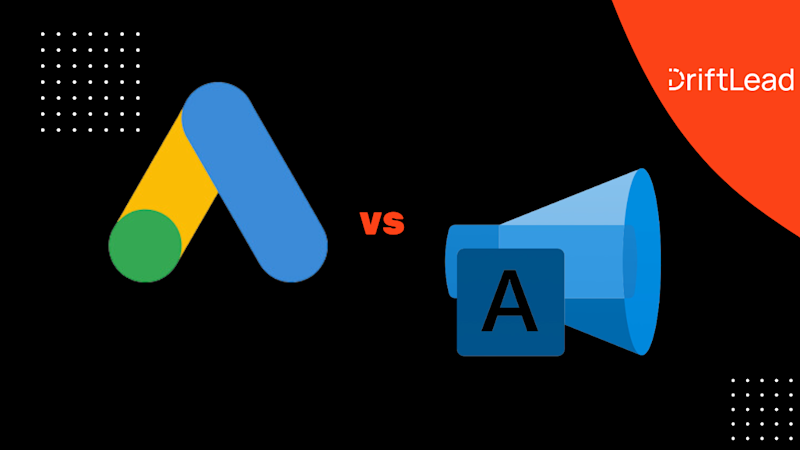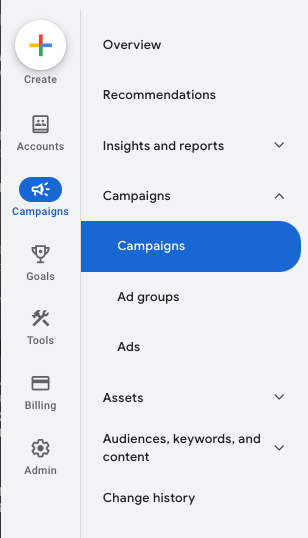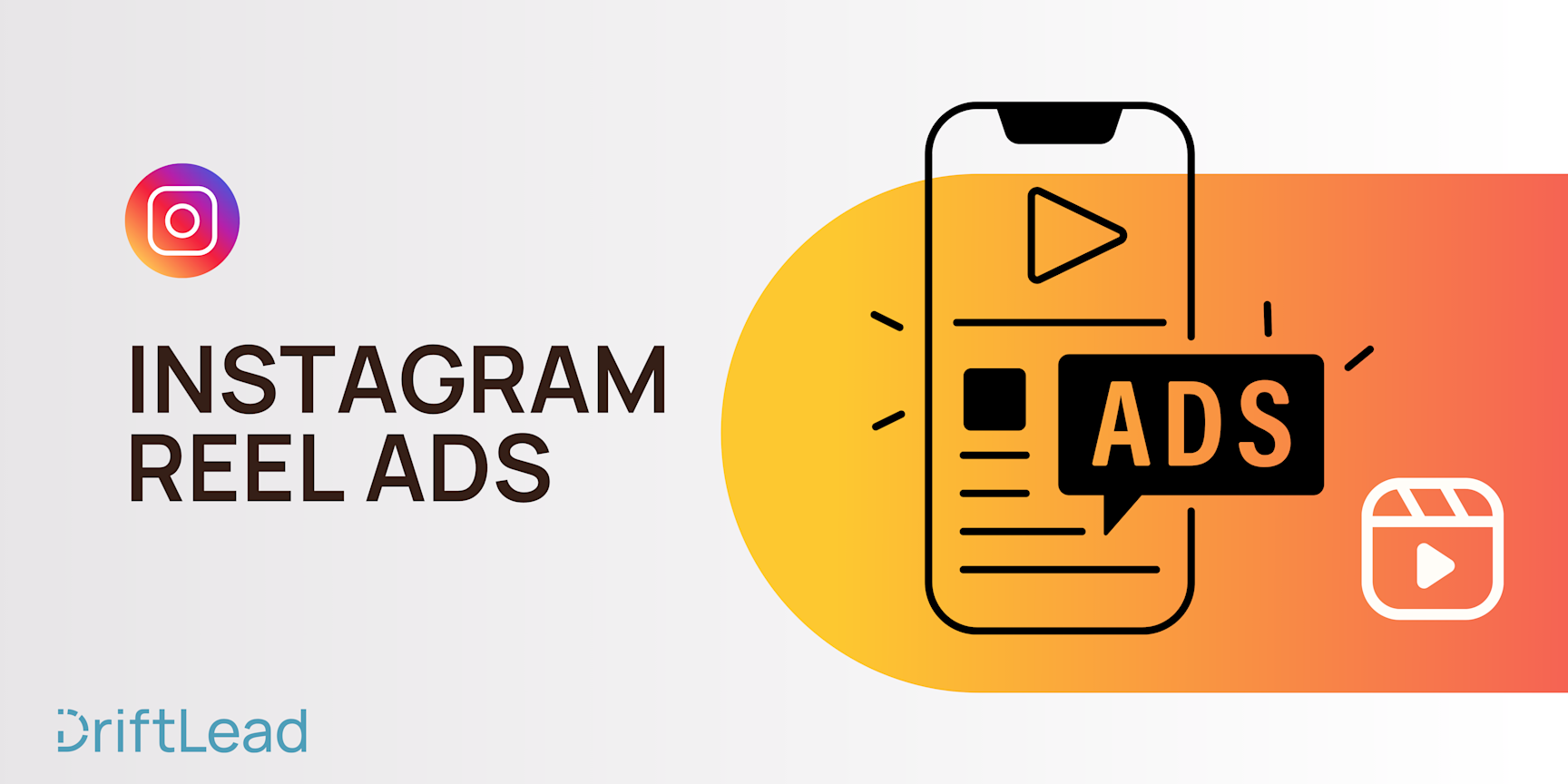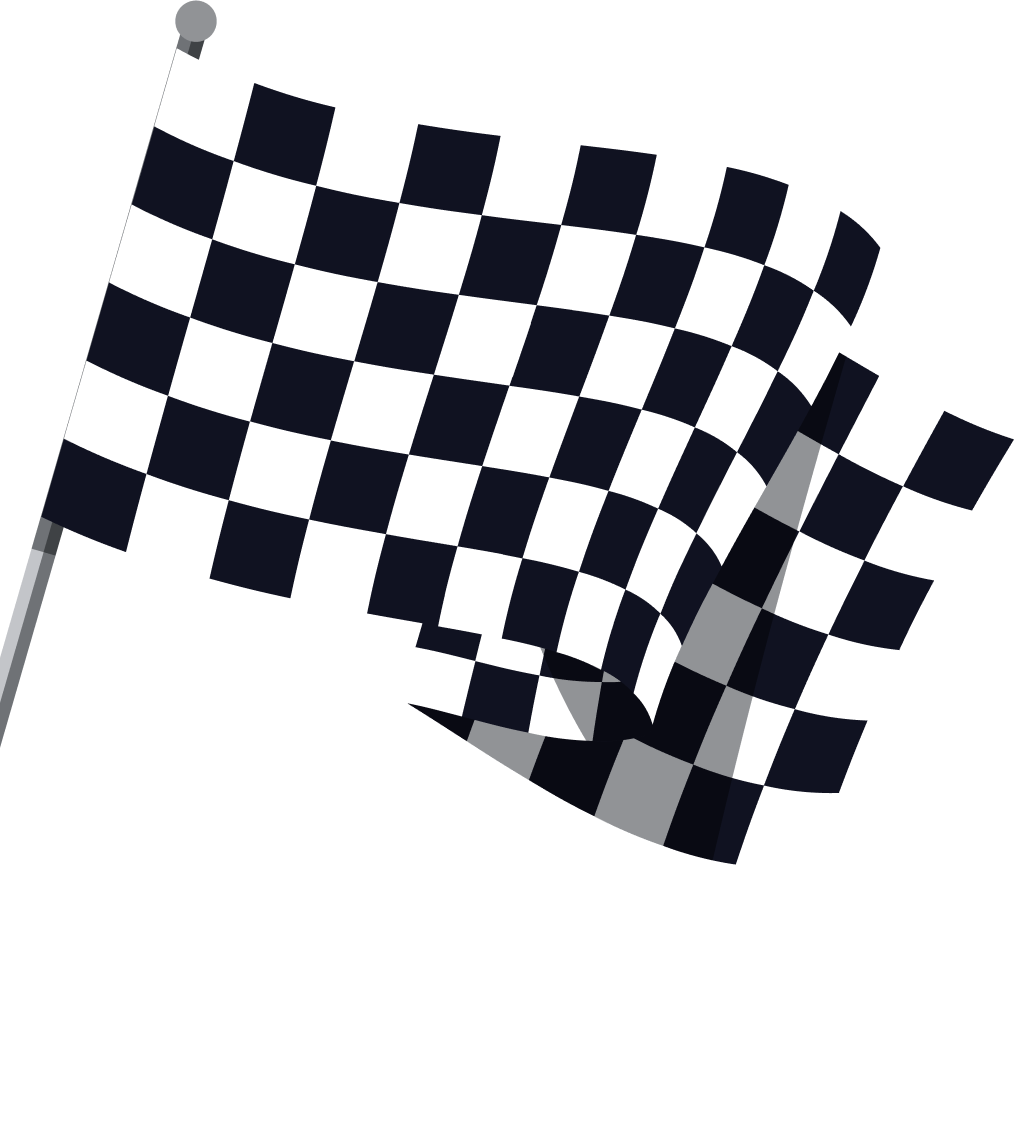Google Ads vs Bing Ads 2024: A Complete Comparison
12 Jul, 2024
Learn about the pros and cons of Google Ads and Bing (Microsoft) Ads so you can better inform your advertising strategy.

Jump to:
Hop on our weekly newsletter train! We're sharing tips so stellar, we're practically job-threatening ourselves!
Let's discuss the David and Goliath of the Advertising World—Google Ads (formerly Adwords) and Microsoft Ads (formerly Bing Ads.) The battle between these two advertising giants has prevailed since the inception of PPC advertising and still continues today 🥊.
If you're a marketer with a budget burning a hole in your pocket, we will help you decipher which search engines you should be investing in and why.
Now, you might be thinking, "Isn't Google Ads the obvious choice? They're practically synonymous with internet searching!" But hold your horses 🐎 - Microsoft Ads might just surprise you with its unique advantages.
In this blog post, we'll explore the ins and outs of both platforms, comparing everything from market share to cost-per-click, and maybe even throw in some dad jokes along the way (sorry, not sorry). By the end, you'll be armed with the knowledge to make an informed decision on whether to go all-in on Google, give Microsoft a shot, or maybe even spread your bets like a savvy Vegas gambler.
So, grab your favorite caffeinated beverage ☕, put on your thinking cap, and let's embark on this thrilling journey through the land of pay-per-click advertising. Who knows? You might just find your perfect advertising match and live happily ever after (or at least until the next algorithm update).
Market Share and Reach
When it comes to the battle of the search engine titans, Google is still the undisputed heavyweight champion of the world. 🏆 But don't count Bing out just yet – this plucky underdog is slowly but surely climbing up the ranks!
Let's break down the numbers, shall we?
Google: The Goliath of Search
Google continues to dominate the search engine market with a whopping 91.47% global market share. That's right, folks – more than 9 out of 10 searches worldwide are powered by Google. Yet they still deny being a monoploy...🤔
In the U.S., Google's grip is slightly looser but still impressive, commanding 87.46% of the search market. A select few like to go against the grain and prefer the company of alternatives...or at least pretend to.
Bing: The Little Engine That Could
Microsoft's Bing might not be the first name that comes to mind when you think "search engine," but it's been making some noise lately. Globally, Bing has carved out a 3.43% market share. It's not exactly breathing down Google's neck, but hey, every journey begins with a single step, right?
In the U.S., Bing performs a bit better, capturing 7.87% of the search market. It's like the quiet kid in class who surprises everyone with a witty comment once in a while.
The Desktop Difference
Here's where things get interesting: When we look at desktop searches only, Bing's market share jumps to a more respectable 10.5%. It seems like Bing has found its niche among the office crowd. Maybe it's all those default settings on work computers? 🖥️
Reach and Demographics
While Google boasts over 1 billion active users each month, Bing shouldn't be overlooked. Microsoft Ads can reach 63 million searchers who aren't accessible through Google Ads. That's a lot of potential customers you could be missing out on!
Bing's audience tends to skew a bit older and more affluent:
Over 70% of Bing users are 35 years or older
38% have a household income exceeding $100,000
So, if your target audience includes mature professionals with deep pockets, Bing might be your secret weapon.
The Takeaway
While Google remains the undisputed king of search, Bing is proving to be a valuable player in the digital advertising game. Depending on your target audience and marketing goals, a combination of both platforms might be the winning strategy.
Remember, in online marketing, it's not always about reaching the most people – it's about reaching the right people. And sometimes, the right people might just be hanging out on Bing! 😉
Ad Formats and Types
When it comes to ad formats and types, both Google Ads and Microsoft Ads (formerly Bing Ads) offer a variety of options to help you reach your target audience effectively. Let’s break down the different ad formats available on each platform and highlight their unique features.
Google Ads: A Multitude of Options
Google Ads provides a comprehensive suite of ad formats, each tailored to different campaign goals and audience interactions. Here’s a rundown of the main ad formats available:
Search Ads 🔍
Description: Text-based ads that appear on Google search results pages.
Main Benefits: Reach users actively searching for specific keywords related to your products or services.
Display Ads 🖼️
Description: Visual ads that appear on the Google Display Network, which includes millions of websites, apps, and Google-owned properties like YouTube and Gmail.
Main Benefits: Great for building brand awareness and reaching a broad audience.
Video Ads 🎥
Description: Ads that play before, during, or after videos on YouTube and other Google partner sites.
Main Benefits: Highly engaging and ideal for storytelling.
Shopping Ads 🛒
Description: Product-based ads that show users a photo of your product, a title, price, store name, and more.
Main Benefits: Perfect for e-commerce businesses to showcase their products directly in search results.
App Promotion Ads 📱
Description: Ads designed to drive app downloads and engagement.
Main Benefits: Promote your app across Google Search, YouTube, Google Play, and the Google Display Network.
Responsive Ads
Description: Ads that automatically adjust their size, appearance, and format to fit available ad spaces.
Main Benefits: Flexibility to fit any ad space and optimize performance.
Call-Only Ads 📞
Description: Ads that encourage users to call your business directly from the ad.
Main Benefits: Drive phone calls to your business, ideal for service-based industries.
Microsoft Ads: Tailored for Specific Needs
Microsoft Ads also offers a variety of ad formats, many of which are similar to those available on Google Ads, but with some unique twists:
Search Ads 🔍
Description: Text-based ads that appear on Bing search results pages.
Main Benefits: Reach users searching on Bing, Yahoo, and AOL.
Microsoft Audience Ads 🖼️
Description: Native ads that appear on Microsoft’s owned and operated sites like MSN, Outlook.com, and partner sites.
Main Benefits: Blend seamlessly with content, providing a non-intrusive ad experience.
Product Ads 🛒
Description: Ads that showcase your products with images, prices, and descriptions.
Main Benefits: Visually appealing and effective for e-commerce.
Multimedia Ads 🎥
Description: Rich media ads combining images, videos, and text.
Main Benefits: Highly engaging and visually striking.
Dynamic Search Ads
Description: Ads that automatically generate based on the content of your website.
Main Benefits: Save time on keyword research and ad creation.
Unique Features and Advantages
Google Ads: Offers advanced AI and machine learning capabilities, extensive reach through the Google Display Network, and robust integration with Google Analytics.
Microsoft Ads: Leverages unique data from Microsoft products, integrates with LinkedIn for B2B targeting, and provides access to a less competitive ad environment, often resulting in lower CPCs.
The Takeaway
Both Google Ads and Microsoft Ads offer a wide range of ad formats to suit different marketing goals and strategies. While Google Ads provides extensive reach and advanced features, Microsoft Ads offers unique advantages, especially for targeting specific demographics and leveraging LinkedIn integration.
Targeting Capabilities
Both Google Ads and Microsoft Ads offer a smorgasbord of options to help you zero in on your ideal audience.
Google Ads: The Swiss Army Knife of Targeting
Google Ads is like that overachieving friend who's good at everything. It offers a veritable buffet of targeting options:
Demographic targeting: Age, gender, parental status, household income – you name it, Google's got it.
Affinity audiences: For when you want to reach people based on their lifestyles and interests. "Cat video enthusiasts," anyone?
In-market audiences: These folks are actively researching or planning to purchase products or services. It's like finding a needle in a haystack, except Google's already magnetized the needle for you.
Remarketing: Because sometimes, you need to gently remind people about that adorable pair of socks they left in their cart.
Custom intent audiences: Create your own audience based on keywords and URLs. It's like being a mad scientist but for ads.
Detailed demographics: Job title, education, marital status – Google knows more about your audience than their own mothers do.
Microsoft Ads: The Dark Horse with a LinkedIn Twist
Don't count Microsoft Ads out just yet! While it might not have the same vast array of options as Google, it's got a few tricks up its sleeve:
LinkedIn Profile Targeting: This is Microsoft's ace in the hole. Want to target CMOs of tech companies in San Francisco? Boom! You can do that.
In-market audiences: Similar to Google, but with its own special sauce.
Remarketing: Because Microsoft users need gentle reminders too.
Custom audiences: Create your own audience segments based on your customer data.
Similar audiences: Microsoft's AI will find people who look like your best customers. It's like cloning, but legal and less sci-fi.
Cost Comparison
When it comes to advertising dollars, every penny counts. So, let's break down the cost differences between Google Ads and Microsoft Ads, shall we?
Google Ads: The Premium Player 🏆
Google Ads is like that fancy restaurant everyone wants to try - it's popular, but it comes with a higher price tag. Here's the scoop:
Average CPC: $2.69 for Search and $0.63 for Display
Competitive Industries: Finance and legal sectors can see CPCs soaring up to $100
Budget Range: Typically requires a larger investment, often $2000 or more, for comprehensive campaigns
But remember, with Google, you're paying for prime real estate. You're getting access to the world's largest search engine audience, which means more eyeballs on your ads.
Microsoft Ads: The Budget-Friendly Alternative 💼
Microsoft Ads is like that hidden gem of a restaurant - fewer people know about it, but the value is fantastic. Here's what you need to know:
Average CPC: $1.54 across all industries
Cost Savings: On average, 33% cheaper than Google Ads
Budget Range: You can often run effective campaigns with 20-35% of your Google Ads budget, typically $400-$700
Plus, in some industries, the savings are even more dramatic. For example, in the automotive sector, CPCs are 32.5% cheaper on Microsoft compared to Google.
Performance Metrics
When comparing Microsoft Ads vs Google Ads, understanding the performance metrics is crucial for making informed decisions about your advertising strategy. Let's break down some key metrics and see how these two platforms stack up against each other.
Click-Through Rate (CTR)
The Click-Through Rate is a vital metric that indicates how often people who see your ad end up clicking on it. Here's how the two platforms compare:
Google Ads: Average CTR of 3.17% across all industries
Microsoft Ads: Average CTR of 2.83% across all industries
Google Ads has a slight edge here, with a CTR that's about 12% higher than Microsoft Ads. This suggests that Google Ads might be more effective at capturing user attention and encouraging clicks.
Conversion Rate
Conversion rate is perhaps the most critical metric, as it directly relates to the effectiveness of your ads in driving desired actions. Let's look at the numbers:
Google Ads: Average conversion rate of 3.75% across all industries
Microsoft Ads: Average conversion rate of 2.94% across all industries
Google Ads takes the lead here as well, with a conversion rate that's approximately 27% higher than Microsoft Ads. This indicates that Google Ads might be more effective at not just attracting clicks, but also at turning those clicks into meaningful actions.
Cost Per Click (CPC)
While getting clicks and conversions is important, the cost of those clicks can make or break your ROI. Here's how the platforms compare in terms of CPC:
Google Ads: Average CPC of $2.69 for search ads
Microsoft Ads: Average CPC of $1.54 across all industries
Microsoft Ads shines in this category, with a significantly lower CPC – about 43% less than Google Ads. This could make Microsoft Ads an attractive option for businesses with tighter budgets or those looking to maximize their ad spend.
Return on Ad Spend (ROAS)
ROAS is a crucial metric that shows how much revenue you're generating for every dollar spent on advertising. While specific numbers can vary widely by industry and campaign, some general trends emerge:
Google Ads: Generally higher ROAS due to higher conversion rates and larger audience reach
Microsoft Ads: Can offer competitive ROAS in certain industries, especially when targeting older, more affluent demographics
Industry-Specific Performance
It's worth noting that performance can vary significantly by industry. For example:
In the automotive industry, Microsoft Ads has shown CTRs up to 45% higher than Google Ads
For B2B companies, Microsoft Ads often performs well due to its integration with LinkedIn targeting
E-commerce businesses might find Google Ads more effective due to its larger reach and shopping ad options
The Bottom Line
While Google Ads generally outperforms Microsoft Ads in terms of CTR and conversion rate, Microsoft Ads offers a more cost-effective option with lower CPCs. The best choice depends on your specific business goals, target audience, and budget.
Remember, these are average figures, and your actual results may vary. It's often beneficial to test both platforms and see which performs better for your specific needs. Many advertisers find success in using both platforms as part of a comprehensive digital advertising strategy. 🚀💼
User Interface and Ease of Use
When it comes to user interface (UI) and ease of use, both Google Ads and Microsoft Ads have their own strengths and quirks. Let's dive into what makes each platform tick and how they stack up against each other.
Google Ads: The Powerhouse with a Learning Curve 📈
Google Ads is like the Swiss Army knife of advertising platforms – incredibly powerful but with a bit of a learning curve. Here’s what you need to know:

Pros:
Comprehensive Dashboard: Google Ads offers a robust and detailed dashboard that provides a wealth of data at your fingertips. From campaign performance to keyword insights, everything is just a click away.
Customization: The platform allows for extensive customization, enabling advertisers to tailor their campaigns to specific needs.
Advanced Features: With features like Performance Max and Smart Bidding, Google Ads leverages AI to optimize your campaigns for better results.
Cons:
Complexity: The sheer number of options and features can be overwhelming for beginners. It’s like trying to navigate a spaceship when all you need is a car.
Frequent Updates: Google is constantly updating its UI, which can be a double-edged sword. While improvements are always welcome, it means users have to frequently adapt to new layouts and features.
Microsoft Ads: The User-Friendly Contender 🏅
Microsoft Ads, on the other hand, is known for its more straightforward and user-friendly interface. Here’s what sets it apart:
Pros:
Simplified Navigation: Microsoft Ads features a clean and intuitive layout, making it easier for new users to get started. It’s like a well-organized toolbox where everything is easy to find.
Ease of Use: With fewer required fields and a more streamlined setup process, Microsoft Ads is often praised for its softer learning curve
Integration with Microsoft Products: The platform integrates seamlessly with other Microsoft products, such as LinkedIn, allowing for more targeted B2B advertising.
Cons:
Less Granular Control: While the simplicity is great for beginners, advanced users might find the lack of granular control limiting compared to Google Ads.
Updates in Progress: Microsoft is currently testing a new UI that closely resembles Google Ads, aiming to reduce friction for users switching between the two platforms
Unique Features and Advantages
When it comes to unique features and advantages, both Google Ads and Microsoft Ads bring their own set of strengths to the table. Let's explore what makes each platform stand out and how these features can benefit your advertising strategy.
Google Ads: The Innovation Leader 🚀
Google Ads is renowned for its cutting-edge features and advanced capabilities. Here are some of the standout features that make Google Ads a powerhouse in the digital advertising world:
Performance Max Campaigns
Description: Performance Max campaigns allow you to access all of Google Ads inventory from a single campaign.
Advantage: This AI-powered campaign type optimizes bidding, budget, ad placements, and creative to help drive the most value for your business across Search, YouTube, Display, Gmail, Maps, and more
Smart Bidding
Description: Automated bidding strategies that use machine learning to optimize for conversions or conversion value.
Advantage: Smart Bidding adjusts your bids in real-time, helping you get the best possible return on investment (ROI) by predicting the likelihood of conversions
Customer Match
Description: Use your first-party data to reach and re-engage with your customers across Google Search, Shopping, YouTube, and Gmail.
Advantage: This feature allows you to create highly personalized ad experiences and target users who are most likely to convert
Video Reach Campaigns
Description: Reach viewers across YouTube with a combination of in-feed, Shorts, and in-stream ads.
Advantage: This multiformat approach maximizes your reach and efficiency, leveraging the power of Google AI to deliver your video ads to the right audience
Local Services Ads
Description: Ads that connect you with customers searching for services in your area.
Advantage: You only pay if a customer contacts you directly through the ad, making it a cost-effective way to generate local leads
Microsoft Ads: The Strategic Contender 🏅
Microsoft Ads, while often seen as the underdog, offers several unique features that can provide strategic advantages, especially for certain demographics and industries:
LinkedIn Profile Targeting
Description: Target users based on their LinkedIn profiles, including company, job function, and industry.
Advantage: This feature is a game-changer for B2B marketers, allowing for highly specific audience targeting that isn't available on Google Ads
Action Extensions
Description: Add a call-to-action button beside your ad in search results.
Advantage: These extensions make your ads stand out and provide an additional incentive for users to click, driving higher engagement and conversions
Microsoft Audience Ads
Description: Native ads that appear on Microsoft’s owned and operated sites like MSN, Outlook.com, and partner sites.
Advantage: These ads blend seamlessly with content, providing a non-intrusive ad experience that can lead to higher engagement rates
Greater Transparency
Description: Detailed reporting on search partner performance.
Advantage: Microsoft Ads provides complete transparency about where your traffic is coming from, allowing you to make more informed decisions about your ad spend
The AI Revolution: How ChatGPT and Copilot Have Transformed Microsoft (Bing) Ads
Since the introduction of ChatGPT and Copilot, Microsoft Ads has undergone a significant transformation, leveraging these AI powerhouses to give their ad platform a leg up.
Enhanced User Interface and Navigation 🧭
Copilot has been seamlessly integrated into the Microsoft Advertising Platform, acting as an AI companion that guides users through the interface. This integration has resulted in:
A 29% reduction in support tickets for the new workflow
Intuitive navigation with contextual prompt starters
One-click access to specific sections of the platform
Creative Assistance 🎨
Copilot has become a virtual creative director, offering:
AI-generated images for ads
Background customization for product images
Tone adjustment for ad copy (e.g., more friendly or persuasive)
Writer's block solutions with AI-recommended copy
Always-On Support 🤖
The introduction of 24/7 in-platform conversational chat has revolutionized customer support:
Real-time answers to support questions
Synthesis of relevant information
Direct links to actionable areas within the platform
Performance Insights 📊
AI has transformed how advertisers analyze campaign performance:
Natural language queries for performance metrics
AI-generated summaries of campaign performance
Insights scenarios to help tackle reporting more quickly and easily
Expanded Advertising Opportunities 🌐
The integration of AI has opened up new avenues for advertisers:
Introduction of Compare & Decide Ads, tailored for the chat experience
Extension of popular search ad formats into the Chat experience
Creation of new ad formats designed specifically for Chat, called Conversational Ads
Wrapping it Up
As we've journeyed through the digital advertising landscape, comparing Google Ads and Microsoft Ads, it's clear that both platforms offer unique strengths and opportunities for advertisers. Let's recap the key takeaways:
Market Share: While Google dominates with over 90% of the global search market, Microsoft Ads offers access to a valuable, often overlooked audience.
Ad Formats: Both platforms provide a variety of ad types, with Google offering more options overall, but Microsoft excelling in areas like LinkedIn integration.
Targeting Capabilities: Google Ads provides more granular targeting options, while Microsoft Ads shines with its unique LinkedIn Profile Targeting for B2B advertisers.
Costs: Microsoft Ads generally offers lower CPCs, making it an attractive option for budget-conscious advertisers or those in competitive industries.
Performance Metrics: Google Ads typically sees higher CTRs and conversion rates, but Microsoft Ads can offer competitive performance, especially in certain industries.
User Interface: Google Ads provides more advanced features but with a steeper learning curve, while Microsoft Ads offers a more user-friendly interface.
AI Integration: Microsoft's recent integration of ChatGPT and Copilot has revolutionized its platform, offering enhanced campaign creation, performance insights, and user support.
So, which platform should you choose? The answer, as with many things in digital marketing, is: it depends. 🤷♂️
For many advertisers, the ideal strategy involves using both platforms to maximize reach and leverage the unique advantages of each. Google Ads offers unparalleled reach and advanced features, making it a must-have for most advertising strategies. Microsoft Ads, with its lower costs, unique targeting options, and recent AI enhancements, can be an excellent complement to your Google Ads campaigns or a powerful standalone option for specific industries and demographics.
Remember, the key to success in digital advertising is continuous testing, learning, and optimization. Don't be afraid to experiment with both platforms to find the perfect mix for your business goals and target audience.
As the digital advertising landscape continues to evolve, with AI playing an increasingly significant role, staying informed and adaptable will be crucial. Keep an eye on emerging trends, new features, and platform updates to ensure your advertising strategy remains cutting-edge and effective.
Whether you're Team Google, Team Microsoft, or playing for both sides, the world of digital advertising is full of opportunities. So go forth, advertise wisely, and may your CTRs be high and your CPCs low! 🚀📈
BTW - if you're new here, hey 👋, we're DriftLead, a performance advertising agency. If you want some expert opinions on whether Bing Ads makes sense for your business, we can help. Request a free marketing plan to see how you can turbocharge your online advertising.






